Synthesis of Green and Red-Emitting Polymethyl Methacrylate Composites Grafted from ZnAl2O4:Mn-Bonded GO via Surface-Initiated Atom Transfer Radical Polymerization
Abstract
:1. Introduction
2. Materials and Methods
2.1. Materials
2.2. Experimental
2.2.1. Fabrication of Photoluminescent ZnAl2O4:Mn/GO
2.2.2. Synthesis of Photoluminescent Initiator ZnAl2O4:Mn/GO-Br
2.2.3. Polymerization of PMMA Composites and Pristine PMMA
2.3. Characterization
3. Results and Discussion
3.1. Structure and Morphology
3.2. Thermal Stability
3.3. Molecular Weight
3.4. Photoluminescent Properties
3.5. Hardness Testing
4. Conclusions
Author Contributions
Funding
Acknowledgments
Conflicts of Interest
References
- Daniere, A. Planning Sustainable Cities: Global Report on Human Settlements 2009. Int. Dev. Plan. Rev. 2011, 33, 99–102. [Google Scholar]
- Kozai, T.; Niu, G. Role of the plant factory with artificial lighting (PFAL) in urban areas. In Plant Factory: An Indoor Vertical Farming System for Efficient Quality Food Production; Kozai, T., Niu, G., Takagaki, M., Eds.; Academic Press: London, UK, 2015; ISBN 9780128017753. [Google Scholar]
- Li, J.; Yan, J.; Wen, D.; Khan, W.U.; Shi, J.; Wu, M.; Su, Q.; Tanner, P.A. Advanced red phosphors for white light-emitting diodes. J. Mater. Chem. C 2016, 4, 8611–8623. [Google Scholar] [CrossRef]
- Lin, C.C.; Liu, R. Advances in Phosphors for Light-emitting Diodes. Phys. Chem. Lett. 2011, 2, 1268–1277. [Google Scholar] [CrossRef]
- Xie, R.; Hintzen, H.T. Optical properties of (oxy) nitride materials: A review. J. Am. Ceram. Soc. 2013, 96, 665–687. [Google Scholar] [CrossRef]
- Sun, Q.; Wang, S.; Devakumar, B.; Sun, L.; Liang, J.; Sakthivel, T.; Dhoble, S.J.; Huang, X. Double perovskite Ca2LuTaO6: Eu3+ red-emitting phosphors: Synthesis, structure and photoluminescence characteristics. J. Alloys Compd. 2019, 804, 230–236. [Google Scholar] [CrossRef]
- Fan, F.; Zhao, L.; Shang, Y.; Liu, J.; Chen, W.; Li, Y. Thermally stable double-perovskite Ca3TeO6: Eu3+ red-emitting phosphors with high color purity. J. Lumin. 2019, 211, 14–19. [Google Scholar] [CrossRef]
- Zhang, X.; Zhou, C.; Song, J.; Zhou, L.; Gong, M. High-brightness and thermal stable Sr3La(PO4)3: Eu3+ red phosphor for NUV light-emitting diodes. J. Alloys Compd. 2014, 592, 283–287. [Google Scholar] [CrossRef]
- Uheda, K.; Hirosaki, N.; Yamamoto, Y.; Naito, A.; Nakajima, T.; Yamamoto, H. Luminescence properties of a red phosphor, CaAlSiN3: Eu2+, for white light-emitting diodes. Electrochem. Solid State Lett. 2006, 9, H22. [Google Scholar] [CrossRef]
- Zhang, D.; Wang, C.; Liu, Y.; Shi, Q.; Wang, W.; Zhai, Y. Green and red photoluminescence from ZnAl2O4:Mn phosphors prepared by solgel method. J. Lumin. 2012, 132, 1529–1531. [Google Scholar] [CrossRef]
- Zhang, D.; Yin, Y.; Liu, Y.; Chao, W.; Zhai, Y. The photoluminescence and magnetic properties of ZnAl2O 4:Mn nanocrystals. J. Phys. Chem. Solids 2013, 74, 1131–1135. [Google Scholar] [CrossRef]
- Huang, S.; Wei, Z.; Wu, X.; Shi, J. Optical properties and theoretical study of Mn doped ZnAl2O4 nanoparticles with spinel structure. J. Alloys Compd. 2020, 825, 154004. [Google Scholar] [CrossRef]
- Priya, R.; Negi, A.; Singla, S.; Pandey, O.P. Luminescent studies of Eu doped ZnAl2O4 spinels synthesized by low-temperature combustion route. Optik (Stuttgart) 2020, 204, 164173. [Google Scholar] [CrossRef]
- Xing, S.; Song, S.; Xiang, J. Low temperature combustion synthesis and photoluminescence mechanism of ZnO/ZnAl2O4 composite phosphors. Optik (Stuttgart) 2020, 208, 164526. [Google Scholar] [CrossRef]
- Afzal, A.; Nawab, Y. 5. Polymer Composites; Woodhead Publishing: Sawston, UK, 2021; ISBN 9780128219843. [Google Scholar]
- El-Bashir, S.M.; Al-Harbi, F.F.; Elburaih, H.; Al-Faifi, F.; Yahia, I.S. Red photoluminescent PMMA nanohybrid films for modifying the spectral distribution of solar radiation inside greenhouses. Renew. Energy 2016, 85, 928–938. [Google Scholar] [CrossRef]
- Gibelli, E.B.; Kai, J.; Teotonio, E.E.S.; Malta, O.L.; Felinto, M.C.F.C.; Brito, H.F. Photoluminescent PMMA polymer films doped with Eu3+-β-diketonate crown ether complex. J. Photochem. Photobiol. A Chem. 2013, 251, 154–159. [Google Scholar] [CrossRef]
- Khursheed, S.; Biswas, P.; Singh, V.K.; Kumar, V.; Swart, H.C.; Sharma, J. Synthesis and optical studies of KCaVO4: Sm3+/PMMA nanocomposites. Vacuum 2019, 159, 414–422. [Google Scholar] [CrossRef]
- Khursheed, S.; Sheergojri, G.A.; Sharma, J. Phosphor polymer nanocomposite: SrAl2O4: Eu2+, Dy3+ embedded PMMA for solid-state applications. Mater. Today Proc. 2020, 21, 2096–2104. [Google Scholar] [CrossRef]
- Prakash, J.; Kumar, V.; Erasmus, L.J.B.; Duvenhage, M.M.; Sathiyan, G.; Bellucci, S.; Sun, S.; Swart, H.C. Phosphor Polymer Nanocomposite: ZnO: Tb3+ Embedded Polystyrene Nanocomposite Thin Films for Solid-State Lighting Applications. ACS Appl. Nano Mater. 2018, 1, 977–988. [Google Scholar] [CrossRef]
- Cheng, L.X.; Liu, T.; Li, L.; Yang, L.; He, H.W.; Zhang, J.C. Self-repairing inorganic phosphors/polymer composite film for restructuring luminescent patterns. Mater. Res. Express 2021, 8, 6. [Google Scholar] [CrossRef]
- Mokni, M.; Pedroli, F.; D’Ambrogio, G.; Le, M.Q.; Cottinet, P.J.; Capsal, J.F. High-capacity, fast-response, and photocapacitor-based terpolymer phosphor composite. Polymers 2020, 12, 349. [Google Scholar] [CrossRef]
- Matyjaszewski, K.; Xia, J. Atom Transfer Radical Polymerization. Chem. Rev. 2001, 101, 2921–2990. [Google Scholar] [CrossRef] [PubMed]
- Yao, Z.; Braidy, N.; Botton, G.A.; Adronov, A. Polymerization from the surface of single-walled carbon nanotubes−preparation and characterization of nanocomposites. J. Am. Chem. Soc. 2003, 125, 16015–16024. [Google Scholar] [CrossRef] [PubMed]
- Baskaran, D.; Mays, J.W.; Bratcher, M.S. Polymer-grafted multiwalled carbon nanotubes through surface-initiated polymerization. Angew. Chem. 2004, 116, 2190–2194. [Google Scholar] [CrossRef]
- Liu, Y.-L.; Chen, W.-H. Modification of multiwall carbon nanotubes with initiators and macroinitiators of atom transfer radical polymerization. Macromolecules 2007, 40, 8881–8886. [Google Scholar] [CrossRef]
- Gan, Z.X.; Xiong, S.J.; Wu, X.L.; He, C.Y.; Shen, J.C.; Chu, P.K. Mn2+-bonded reduced graphene oxide with strong radiative recombination in broad visible range caused by resonant energy transfer. Nano Lett. 2011, 11, 3951–3956. [Google Scholar] [CrossRef]
- Eda, G.; Lin, Y.; Mattevi, C.; Yamaguchi, H.; Chen, H.; Chen, I.; Chen, C.; Chhowalla, M. Blue photoluminescence from chemically derived graphene oxide. Adv. Mater. 2010, 22, 505–509. [Google Scholar] [CrossRef]
- Gonc, G.; Marques, P.A.A.P.; Barros-timmons, A.; Bdkin, I.; Singh, M.K. Graphene oxide modified with PMMA via ATRP as a reinforcement filler. J. Mater. Chem. 2010, 20, 9927–9934. [Google Scholar] [CrossRef]
- Stobinski, L.; Lesiak, B.; Malolepszy, A.; Mazurkiewicz, M.; Mierzwa, B.; Zemek, J.; Jiricek, P.; Bieloshapka, I. Graphene oxide and reduced graphene oxide studied by the XRD, TEM and electron spectroscopy methods. J. Electron. Spectros. Relat. Phenom. 2014, 195, 145–154. [Google Scholar] [CrossRef]
- Spitalsky, Z.; Tasis, D.; Papagelis, K.; Galiotis, C. Carbon nanotube–polymer composites: Chemistry, processing, mechanical and electrical properties. Prog. Polym. Sci. 2010, 35, 357–401. [Google Scholar] [CrossRef]
- Trung, D.Q.; Tu, N.; Quang, N.V.; Tran, M.T.; Du, N.V.; Huy, P.T. Non-rare-earth dual green and red-emitting Mn-doped ZnAl2O4 phosphors for potential application in plan-growth LEDs. J. Alloys Compd. 2020, 845, 2–10. [Google Scholar] [CrossRef]

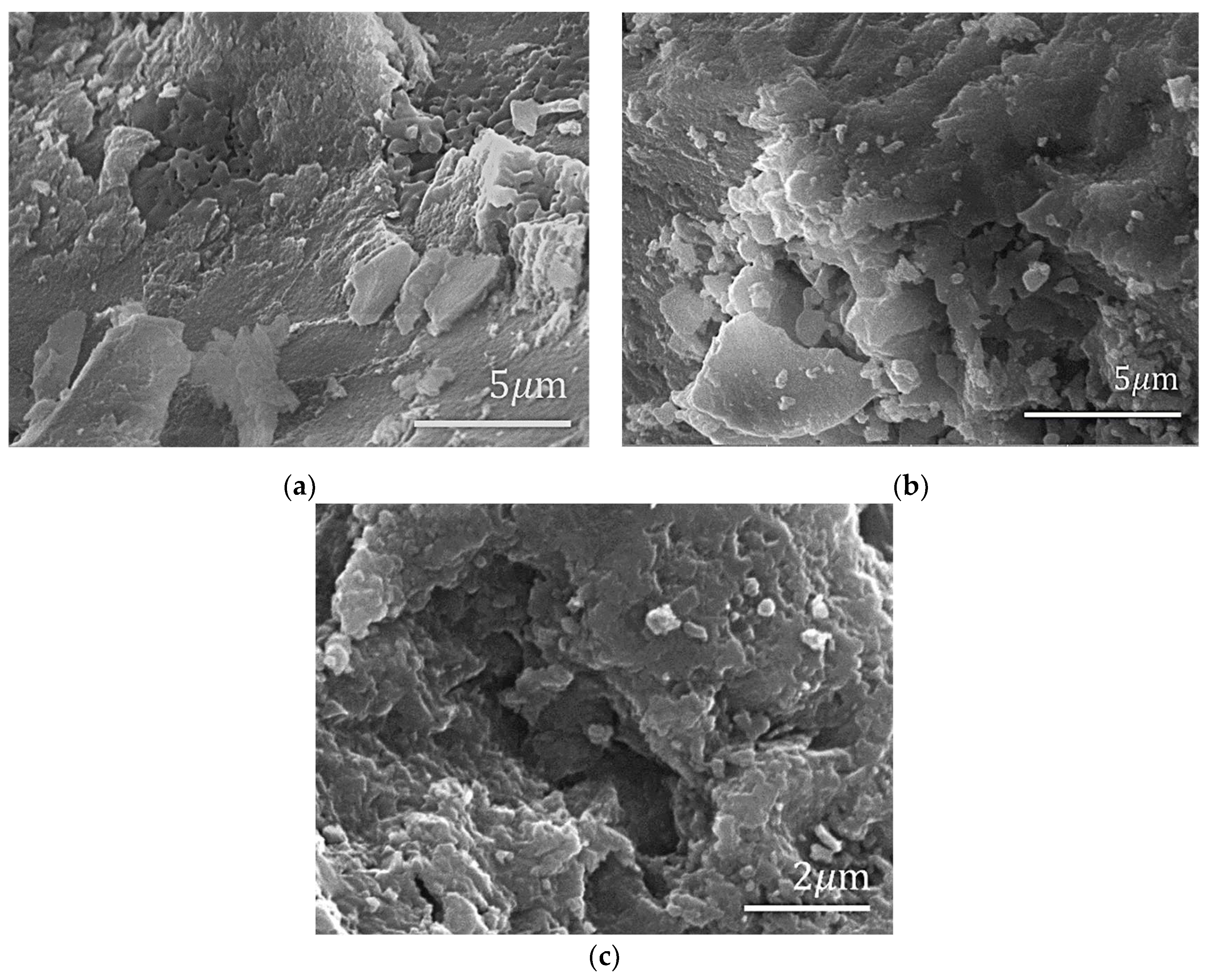
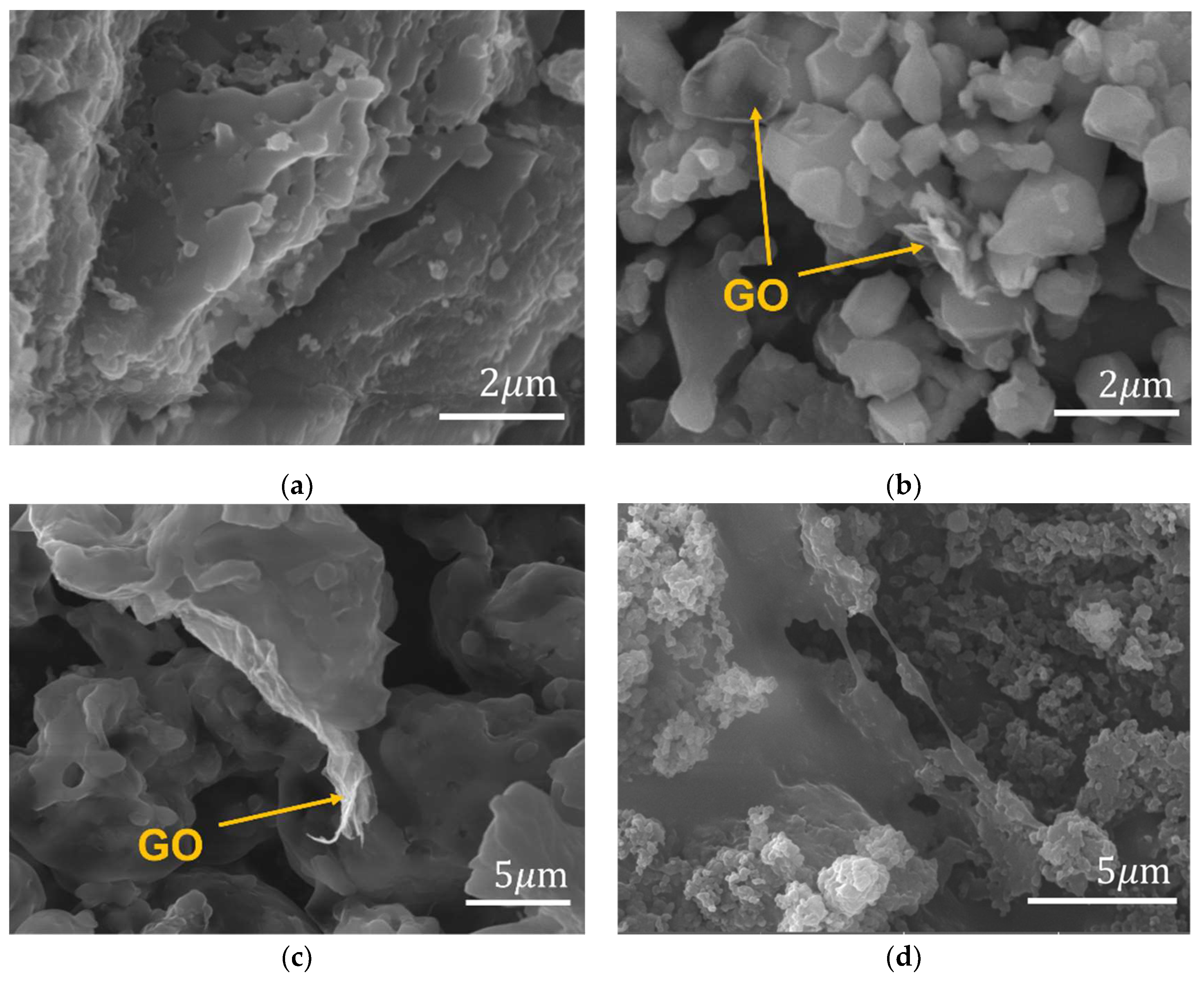
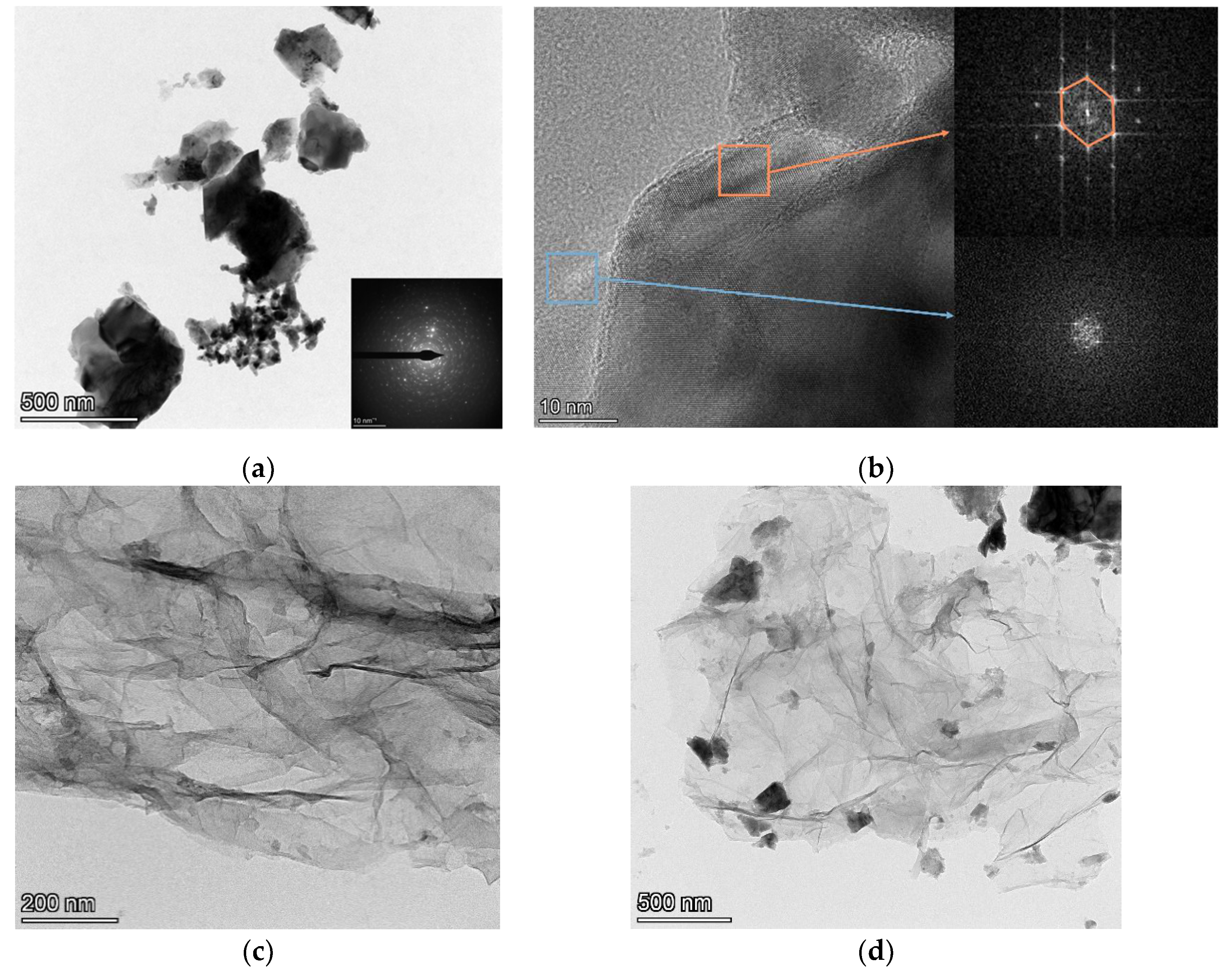
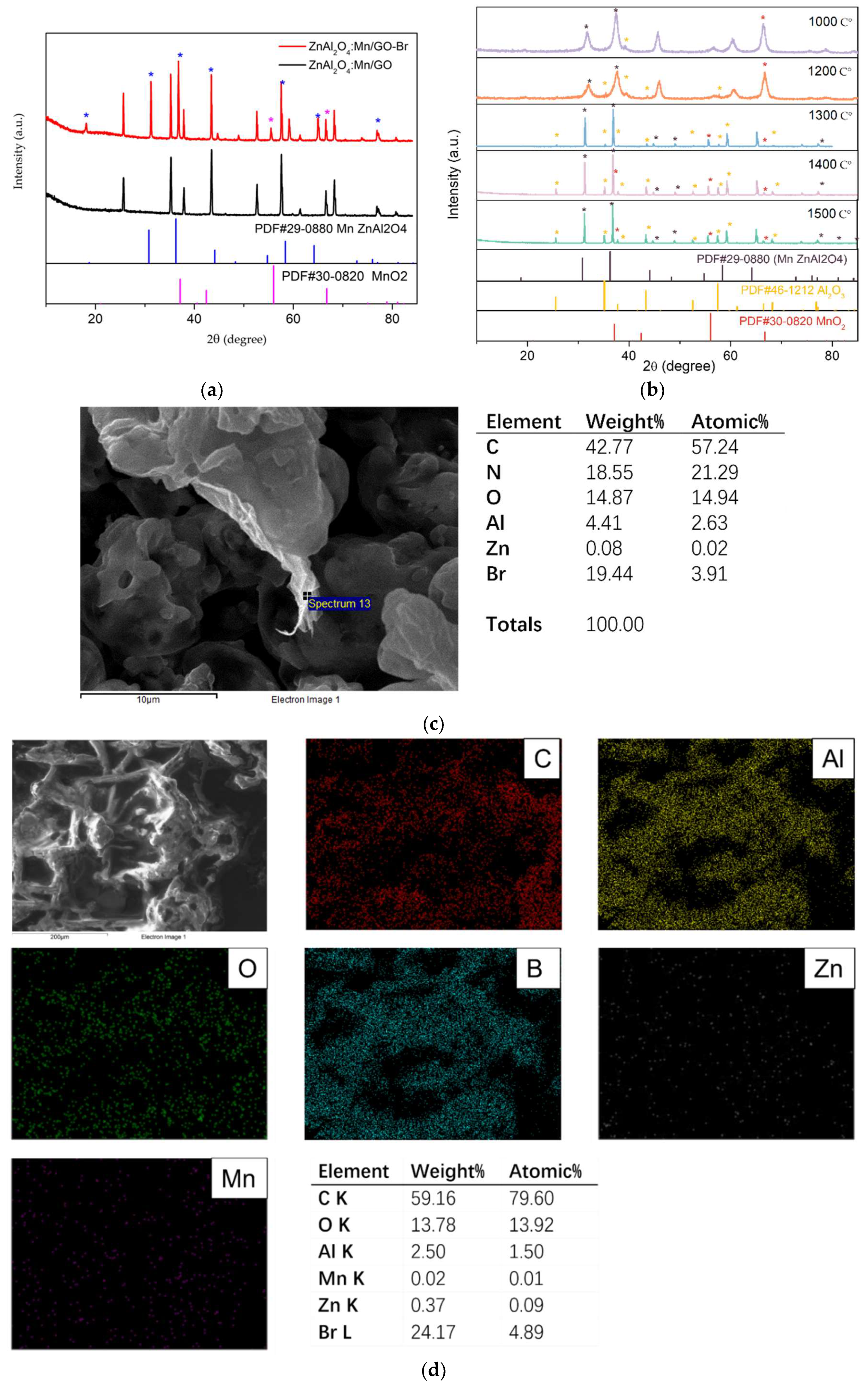
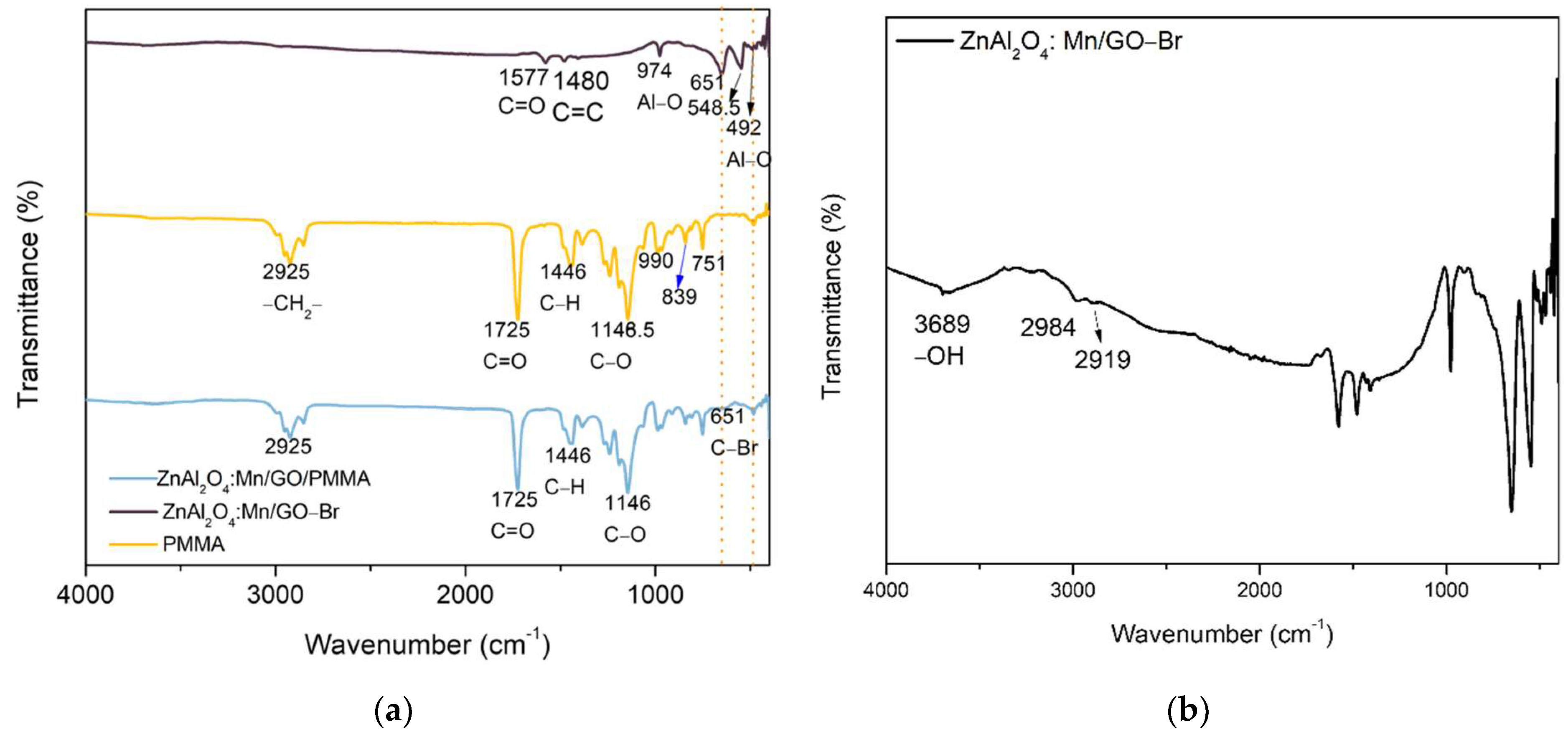

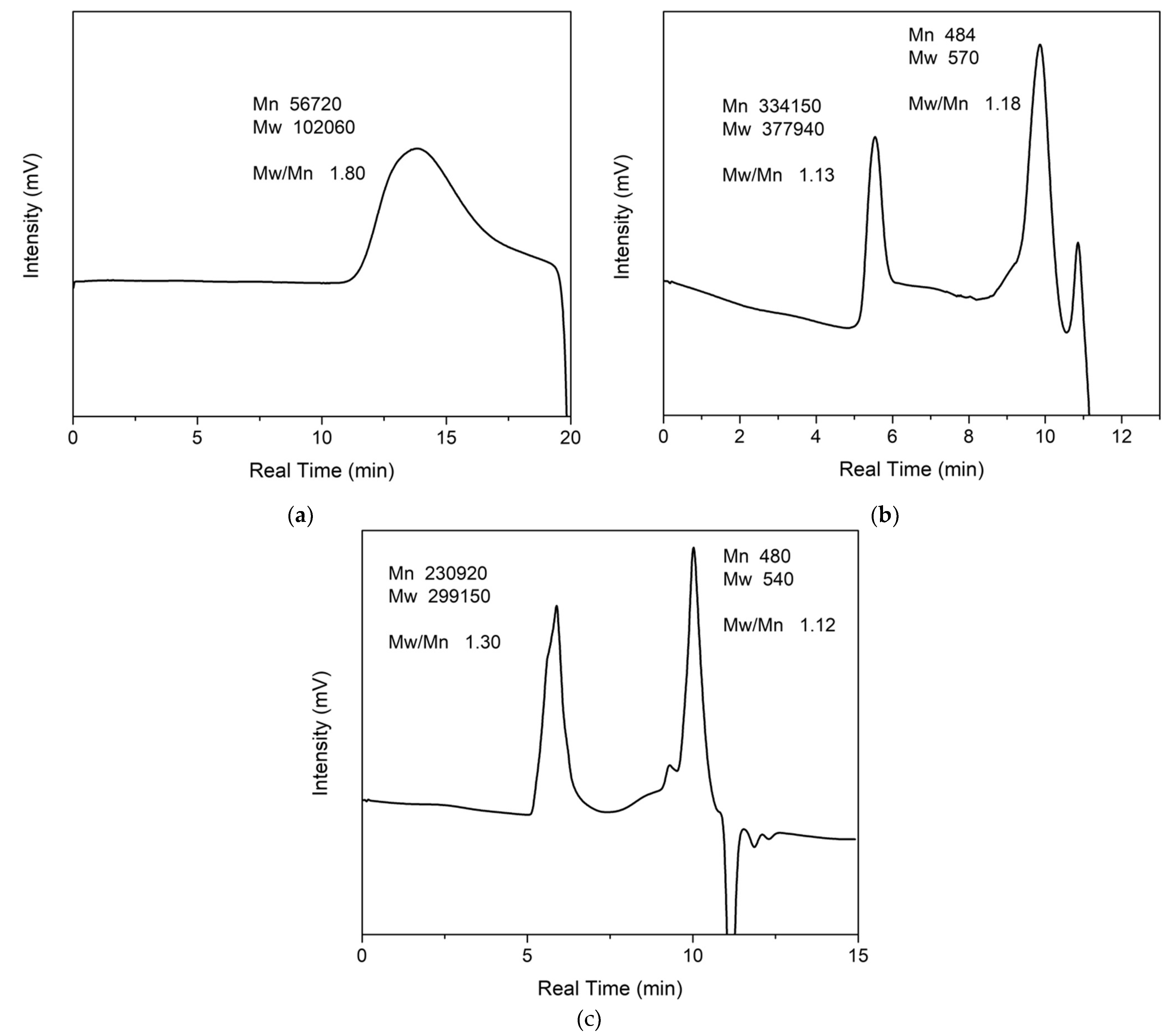

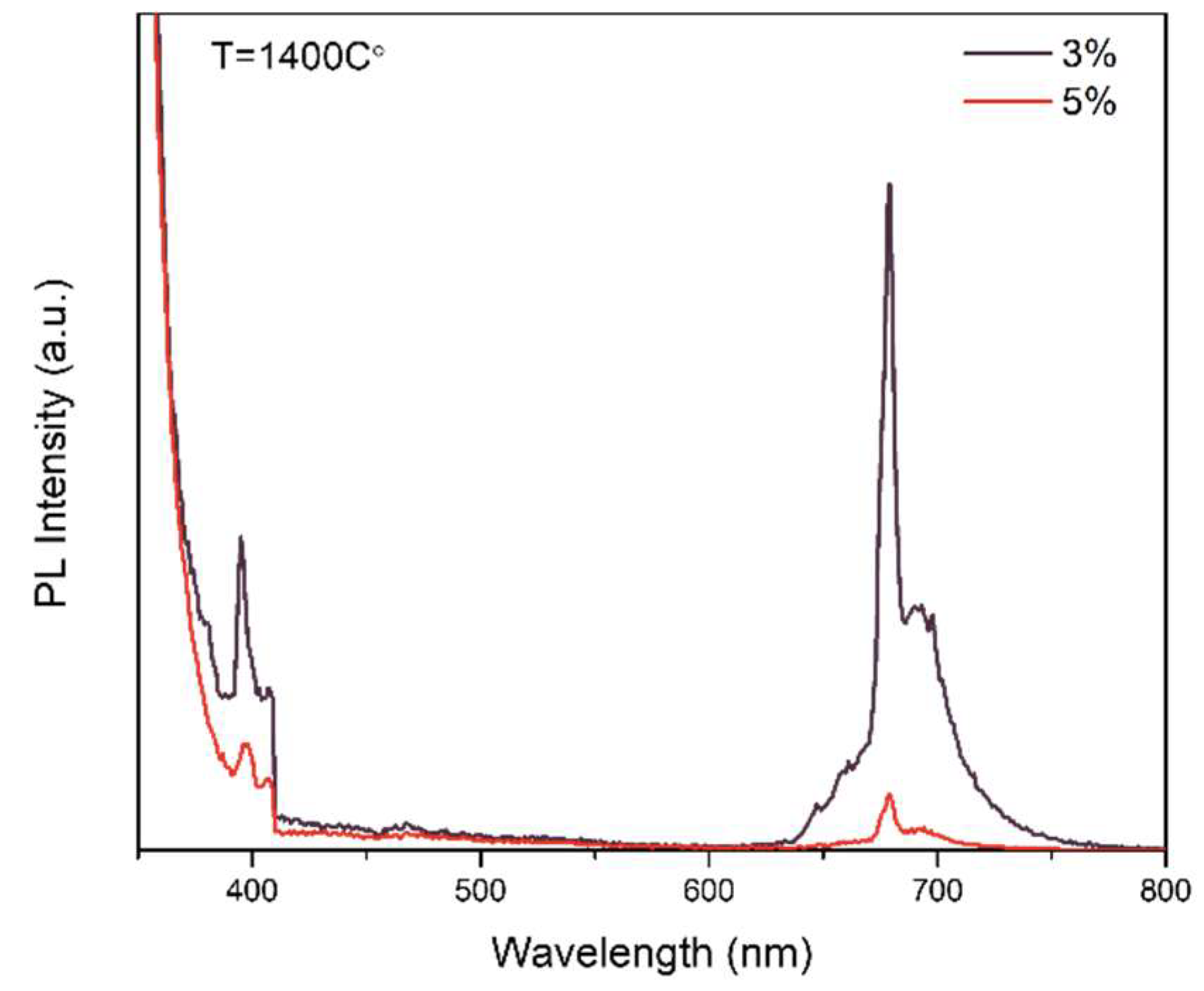
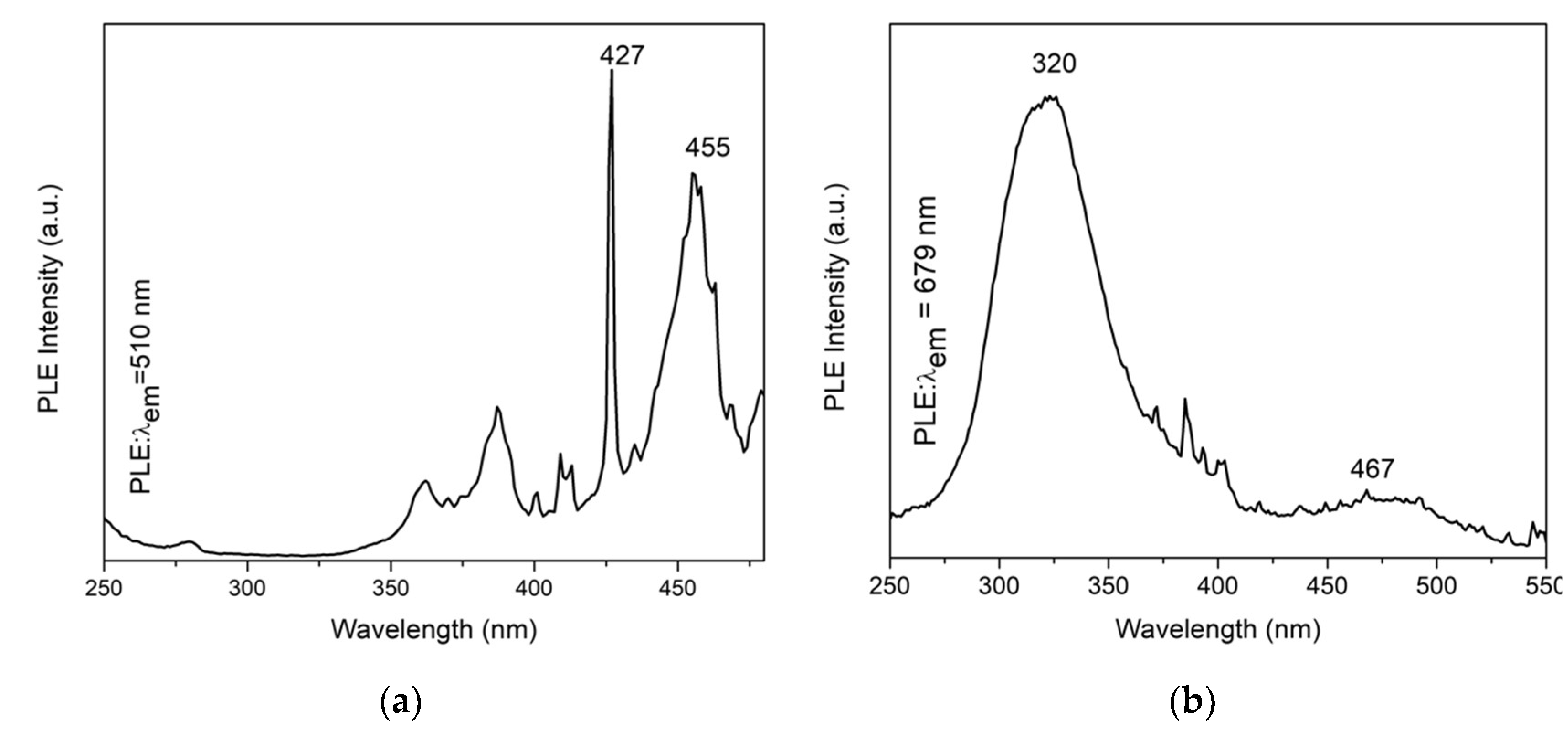
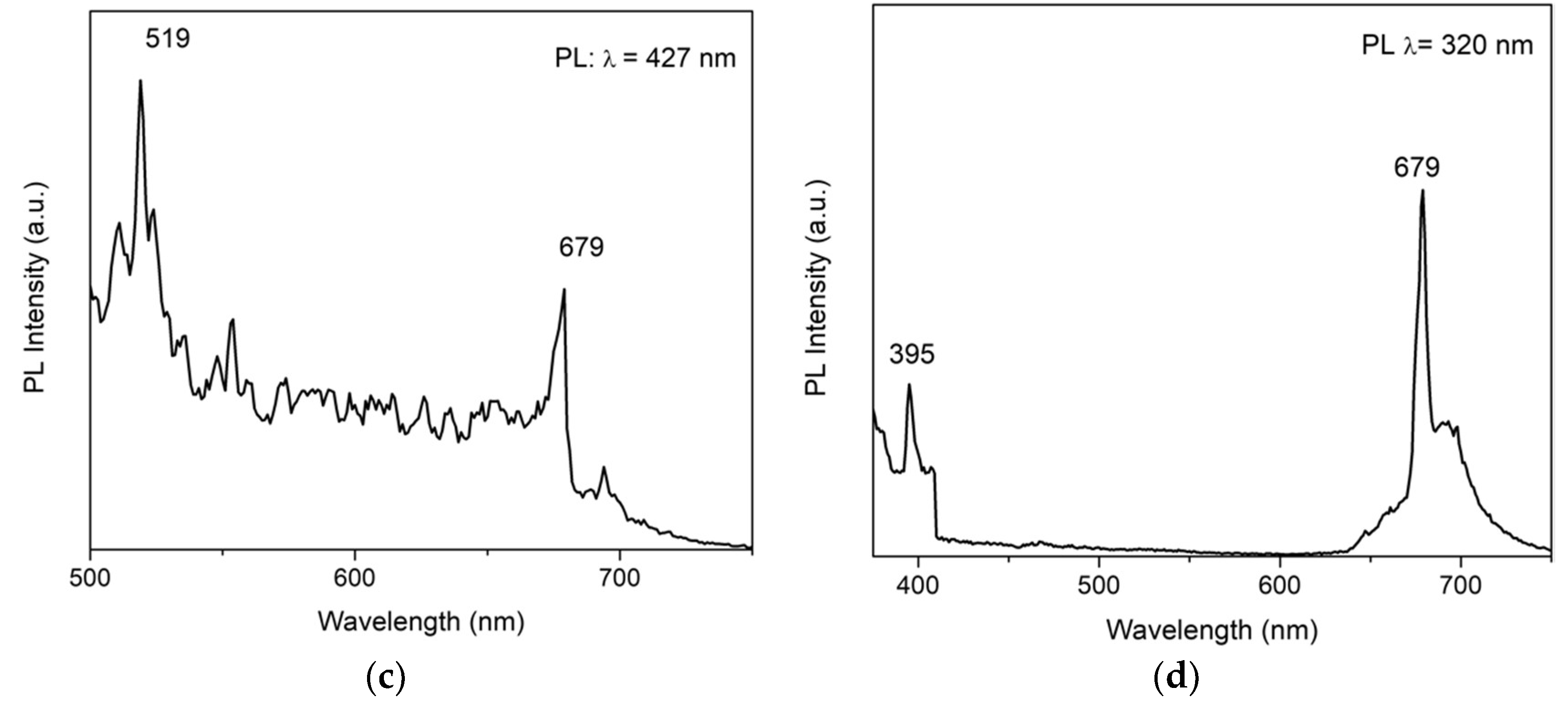
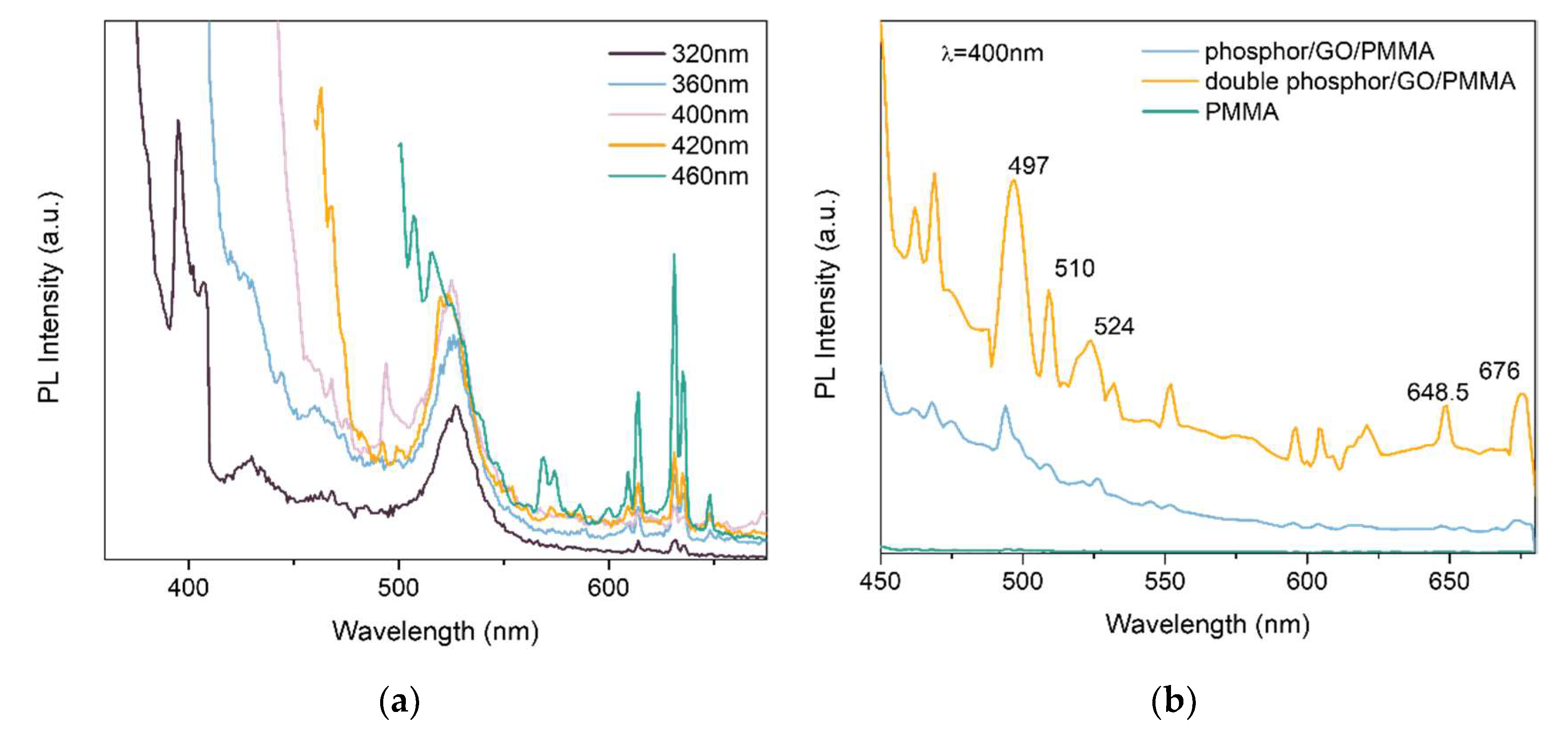
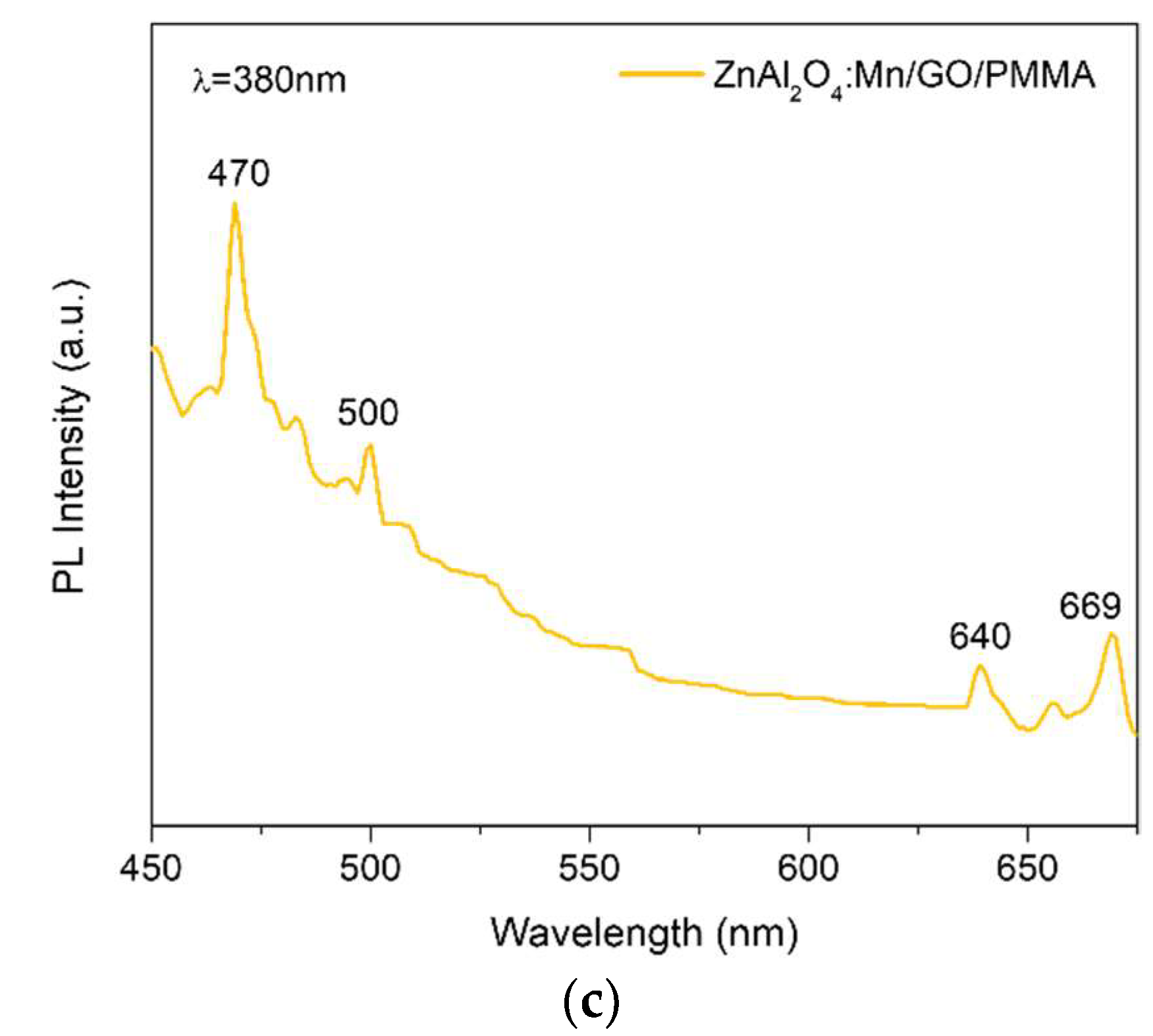
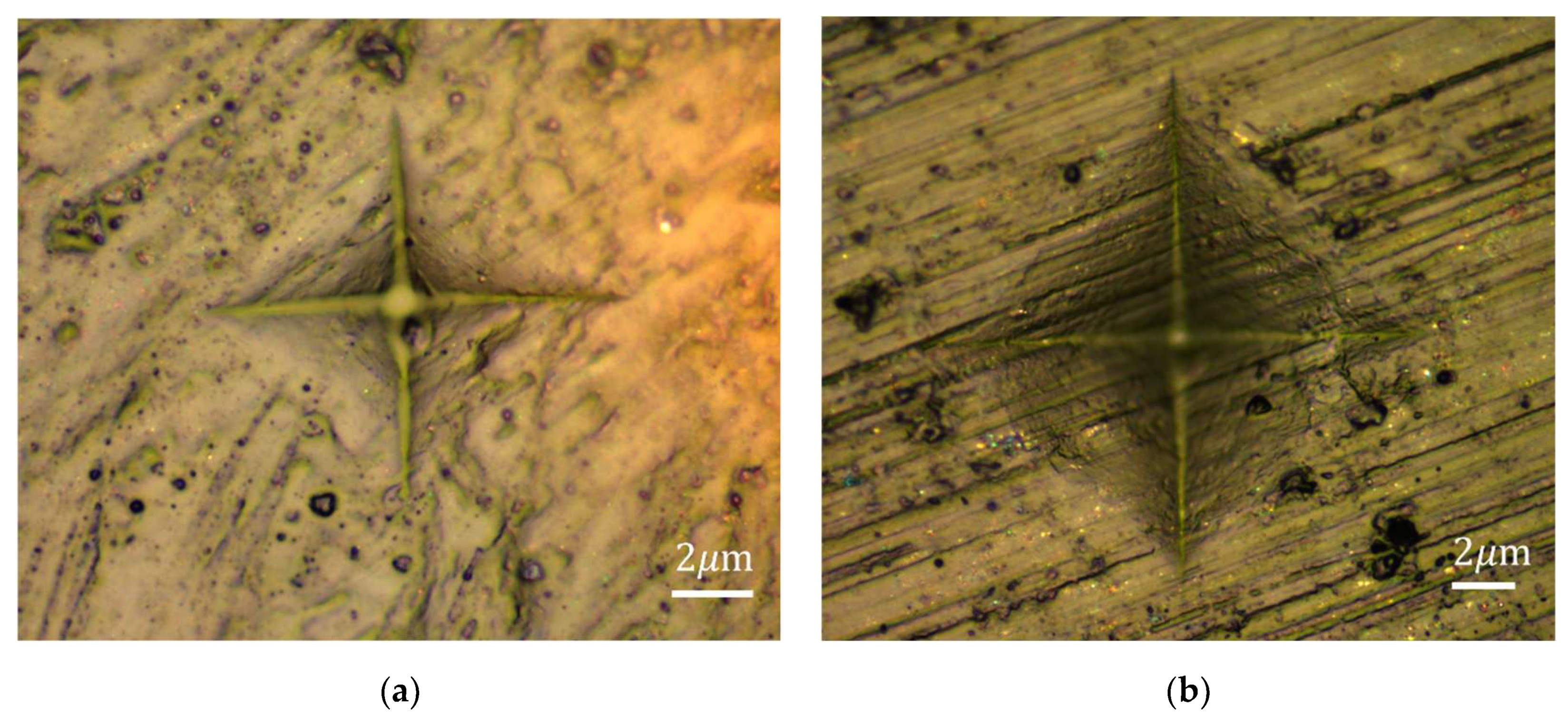
| Sample | Mn | Mw | Mz | Mz+1 | Dispersity | Mz/Mw |
|---|---|---|---|---|---|---|
| PMMA | 56,720 | 102,060 | 178,120 | 274,040 | 1.80 | 1.74 |
| ZnAl2O4: Mn/GO/PMMA | 334,150 | 377,940 | 420,400 | 461,030 | 1.13 | 1.11 |
| Higher concentration ZnAl2O4: Mn/GO/PMMA | 230,920 | 299,150 | 357,550 | 411,200 | 1.30 | 1.20 |
Publisher’s Note: MDPI stays neutral with regard to jurisdictional claims in published maps and institutional affiliations. |
© 2022 by the authors. Licensee MDPI, Basel, Switzerland. This article is an open access article distributed under the terms and conditions of the Creative Commons Attribution (CC BY) license (https://creativecommons.org/licenses/by/4.0/).
Share and Cite
Gao, M.; Cheung, C.-F.; Wang, B.; Wang, C. Synthesis of Green and Red-Emitting Polymethyl Methacrylate Composites Grafted from ZnAl2O4:Mn-Bonded GO via Surface-Initiated Atom Transfer Radical Polymerization. Polymers 2022, 14, 3689. https://doi.org/10.3390/polym14173689
Gao M, Cheung C-F, Wang B, Wang C. Synthesis of Green and Red-Emitting Polymethyl Methacrylate Composites Grafted from ZnAl2O4:Mn-Bonded GO via Surface-Initiated Atom Transfer Radical Polymerization. Polymers. 2022; 14(17):3689. https://doi.org/10.3390/polym14173689
Chicago/Turabian StyleGao, Ming, Chi-Fai Cheung, Bo Wang, and Chunjin Wang. 2022. "Synthesis of Green and Red-Emitting Polymethyl Methacrylate Composites Grafted from ZnAl2O4:Mn-Bonded GO via Surface-Initiated Atom Transfer Radical Polymerization" Polymers 14, no. 17: 3689. https://doi.org/10.3390/polym14173689
APA StyleGao, M., Cheung, C.-F., Wang, B., & Wang, C. (2022). Synthesis of Green and Red-Emitting Polymethyl Methacrylate Composites Grafted from ZnAl2O4:Mn-Bonded GO via Surface-Initiated Atom Transfer Radical Polymerization. Polymers, 14(17), 3689. https://doi.org/10.3390/polym14173689









